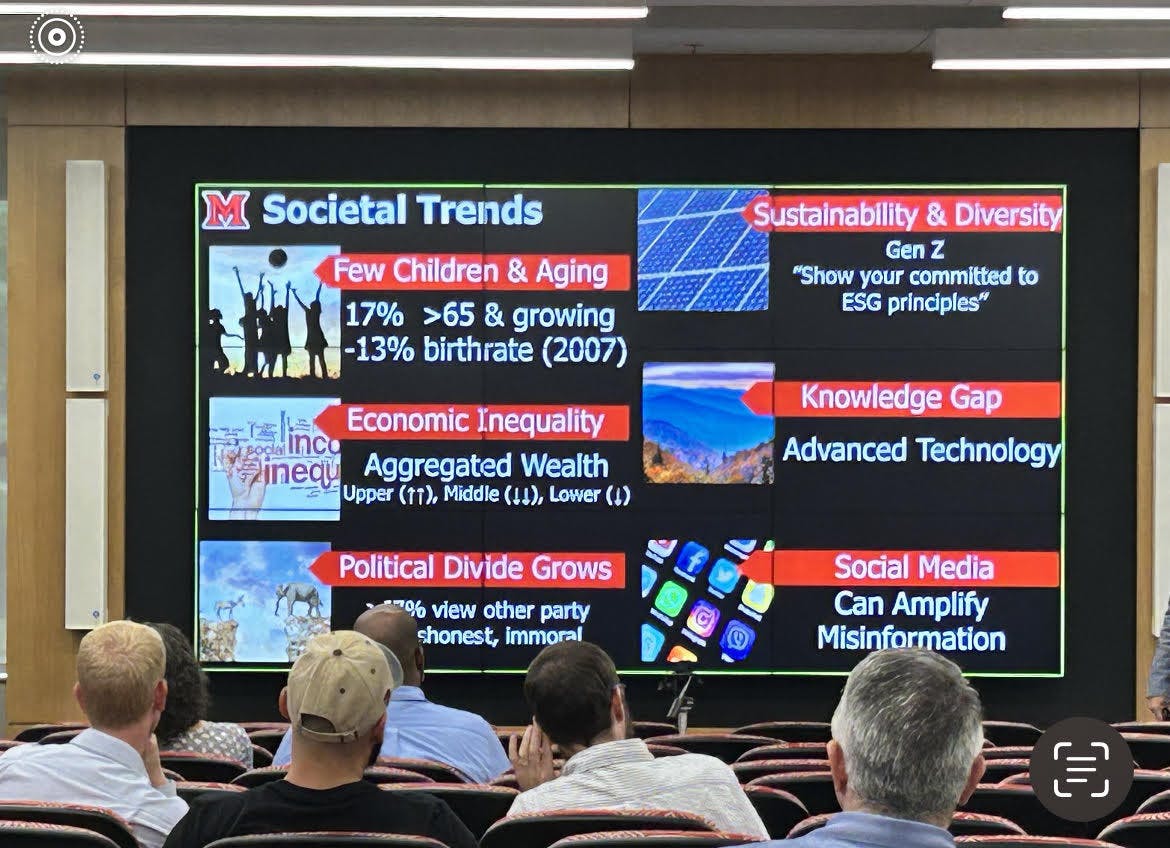For-profit and community colleges are facing declining college admissions year after year as the number of students seeking a path of higher education declines nationally.
The two main reasons for this phenomenon are a continuous dropping birth rate leading to an overall smaller demographic of students, and the fact that fewer and fewer students are graduating from high school. This trend is impacting college admissions all around the country, but not here in Oxford.
Brent Shock, vice president for Enrollment Management and Student Success, said Miami University saw a record number of students enroll following the pandemic, with a first-year class of 4,504 students in 2021, pulled from a pool of more than 36,000 applicants. This was a 14% increase from the year prior — a dramatic jump from the pre-pandemic years, where admissions barely reached the 4,000 mark.
According to the Office of Institutional Research and Effectiveness, Miami received 29,990 applications for first-year admission in the fall of 2021, with 4,519 students enrolled. Out of the near 30,000 applications, 15% of all applications ended in an enrolled Miami student.
In 2023, Miami received 33,912 applications, and 4,046 became Miami students. The percentage of applications that became Miami students decreased from 15% to 11.9% from 2021 to 2023.
“At Miami, we have kicked off an intensive marketing campaign titled ‘We Will,’ where we have worked to expose the Miami brand further and further out,” Shock said.
He added that Miami is looking to advertise to students outside the Midwest bubble, in places like the east coast, Texas and Georgia.
The “We Will” campaign is not the only initiative Miami took to increase admissions following the pandemic. Bethany Perkins, assistant vice president and director of Admissions, said Miami has also been working to make sure students who deferred for a year remember why they chose Miami in the first place.
“It is very important to us that students did not lose sight of their goals after deferring, and we really worked to ensure that Miami was their ultimate college choice,” Perkins said.
Low enrollment across the country
While Shock said that Miami is keeping applications and enrollment high, there is currently a national decline. Miami is part of a network of colleges that will have to deal with a decrease in the pool of students.
Enjoy what you're reading?
Signup for our newsletter
On Thursday, Sept. 7, Miami’s President Greg Crawford and Provost Liz Mullenix held a faculty assembly discussing multiple issues the university currently faces, including a decrease in enrollment and national interest in going to college.
At the meeting, Crawford said Americans’ interest in going to college is down 17% from 2018 to 2020, while global interest increased 3.8% from 2021 to 2022.
“Less international students are coming to the United States, and so we’ve lost some market share there,” Crawford said at the meeting. “There’s been more interest in Canada, Australia, New Zealand and the U.K.”
Also at the meeting, Crawford acknowledged that applications in Ohio are down 12% from 2012 to 2022, and national applications are down 1.9% from 2020 to 2021.

At the faculty assembly meeting on Sept. 7, Miami's President Greg Crawford and Provost Liz Mullenix identified social trends that are causing less students to go to college.
Miami also looks to combat the national decline in college admissions by working to make sure that enrolled students stay enrolled for all four years of their undergraduate degree. BaShaun Smith, dean of students, said Miami has the highest four-year graduation rate in Ohio. Smith said Miami also has a retention rate of around 89.6% compared to the national average of 72.54% for four-year public schools nationally, according to univstats.com.
Miami keeps this number high by implementing a number of programs to make Miami students feel welcome on campus within their first months of being here. During the first 50 days, Miami focuses on the first-year class to make sure “the campus feels like home to them from the start,” Shock said.
Shock said Miami also appeals to applicants seeking a college with professors invested in undergraduate learning.
“Miami prides itself on its commitment to the undergraduate students,” Shock said. “Our professors are really known for teaching undergraduates and not spending a lot of time on graduate students or graduate research.”
Grace Milton, a sophomore strategic communications major, said college, specifically Miami, has always been the path for her.
“I feel like college has been ingrained in me since I was little,” Milton said. “Both of my parents really pushed that it is an integral part of being successful.”
Adam Creeden, a first-year business undecided major, agreed that college was the only path for him all of his life.
“My high school was a college preparatory high school, so it just really felt like the only option,” Creeden said.
Shock also said that the higher level of academics offered at Miami is really what sorts out the students who know they want a four-year degree from students who are on the fence.




